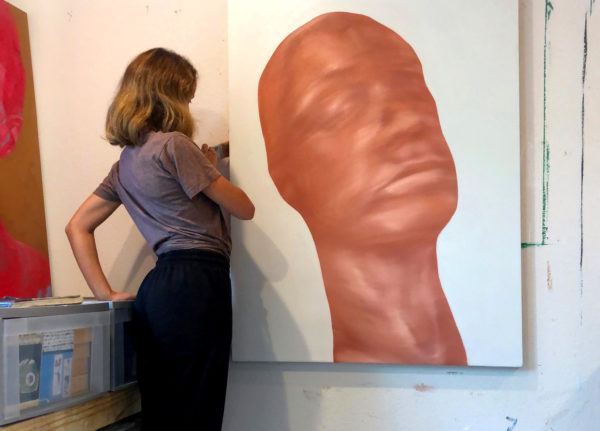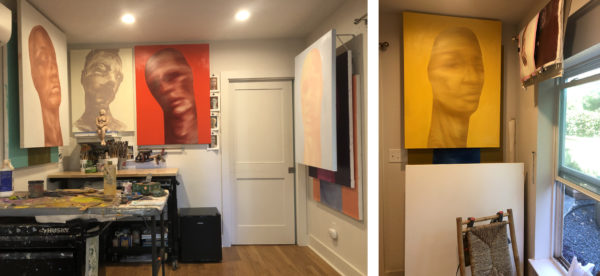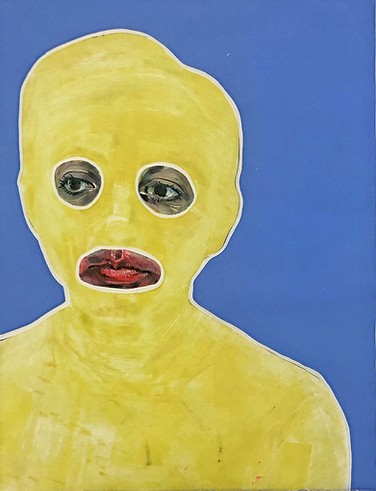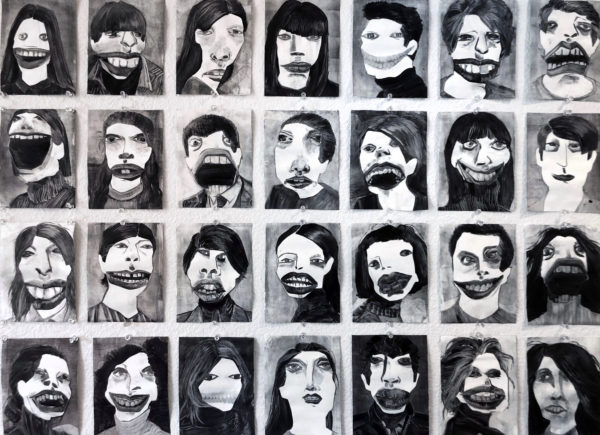by Jerry Slayton
Our November artist of the month is Hannah Lee. Hannah is a prolific artist and educator with an undeniable talent. Her art practice and pedagogy reflect her willingness to share and explore human emotion. Hannah and I first crossed paths while teaching art together at a local studio in Austin. I was immediately struck by her ability to quickly connect with students. In the classroom she goes above and beyond to encourage all members of the group and create a space where all voices are welcomed. Hannah’s ability to empathize and her devotion to inclusion are the common threads between her art practice and teaching practice.

Her journey as a teaching artist started with her volunteer work in high school. She was fortunate enough to grow-up down the street from Holy Angels, an independent nonprofit in Shreveport, Louisiana that provides residential training to people with intellectual and developmental disabilities. While volunteering there Hannah was trained to assist participants in culinary arts, business services, horticulture, and given her first opportunity teach creative arts. During her time at Holy Angels, she became deeply embedded in their community arts program and reconsidered her understanding of arts education even then. The inclusive community she witnessed there left an impression on her head and heart. Later Hannah studied Special Education at Baylor before shifting her focus back to Fine Arts and receiving her BFA. After undergraduate school she moved to Austin to teach students with diverse abilities at the Arc of the Arts, which is where she and I met.

When asked to reflect on that teaching experience she said,
“ I had been so traditionally trained, that in my mind there is a right and wrong way to do things. But in working with diverse ability groups, that may not have academic training, they seemed more willing to take risks, or at least what I consider risks. And so they taught me that I don’t have to work in these traditional ways, I can find my authenticity through try new approaches… They were not burdened by the history of art and tradition, thus their ideas felt more organic and real, they didn’t feel pressured to make things for a gallery. They are just making what feels authentic to them, with joy. And that’s the point, being true to ourselves.”
In 2020, Hannah graduated from the New York Academy of Art with her MFA. She attended the school because of its intense focus on the human figure. In the mid-late 20th century painting the figure had fallen out of fashion, and a so a number of the top figurative artists in NY gravitated to the academy, making it a hub for figurative painting. Hannah believes figurative work “… demands empathy and demands connection, and it can put the viewer in a vulnerable spot. It makes them confront things that they might want to avoid.” She believes this exploration is very important and that artists should explore this area of humanity.

Portrait of a figure. The body of the figure is covered with a layer of lemon yellow paint allowing only the mouth and eyes to be seen in full detail. The background of the picture is a flat cornflower blue.Her work for the past 2 years has focused on the human portrait, and how little we have to see to connect with another person. “What is the minimal amount of information we need to feel like we have a bond with a person?” Her paintings have morphed into portraits that are incredibly vague, people with masks on, hiding themselves with clothing or shadowy silhouettes. In a recent series Hannah explored over 40 facial expressions that reveal the innermost feelings of the subject, however the expressions themselves seem bound by the shape or silhouette of the face.

She explains: “We don’t connect so much with the way a person looks, but more so with the feeling that they gave you. So I want my portraits to be more of the feeling than the likeness. Because I think that is the part that stays with you.”
Hannah’s passion for uncovering and expressing emotion in her artwork speaks to her desire to cultivate empathy within herself and her art practice. This same desire allows her to connect with her students of diverse abilities and create inclusive spaces within her teaching practice and community. She learns with her students and from her students and then puts into practice what she’s learned. This constant drive for growth fuels her artwork and education deeper and deeper into the human condition.
Jerry Slayton
New Media Instructor
[email protected]
